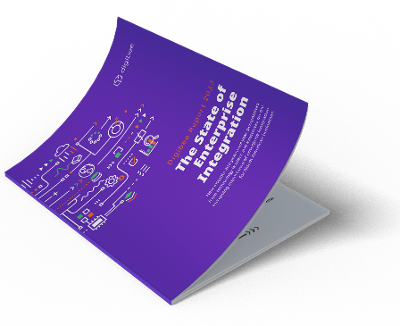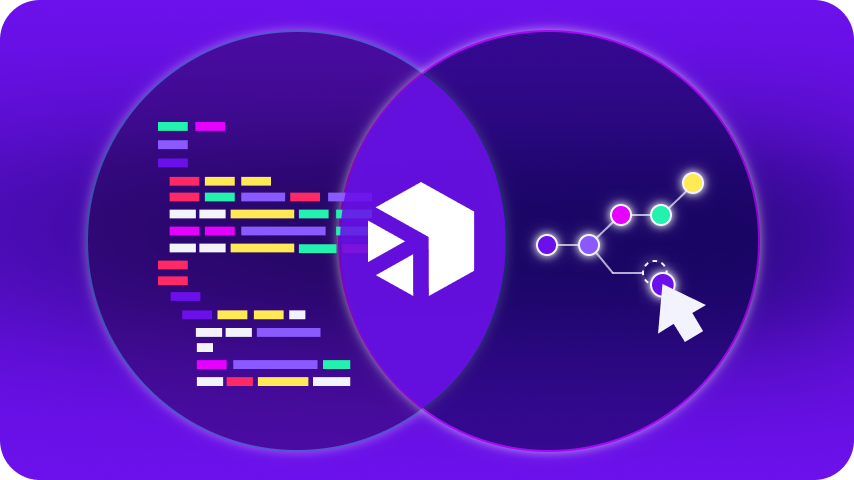April 25, 2023
Our second annual survey of the enterprise integration market was published today, unveiling some intriguing insights and generating plenty of discussion.
In reviewing the survey results, I was struck by one constant. Most organizations now consider integration to be a core requirement for their digital transformation initiatives. In fact, coupled with cloud migration (a critical enabler in most modernization projects), digital transformation is the top integration objective in the survey, with almost 30% of respondents ranking it number one.
This is an amazing result, especially when you consider that just a few short years ago, the majority of enterprises were still on the fence about implementing iPaaS technology.
Inspiration via Integration
Myself and members of the team are often in discussions with many c-suite, IT, and AppDev leaders. During these conversations, we have discovered many have at least one digital transformation project underway – but most, have many. Although the majority of these projects are relatively straightforward, the underlying motivation for some was truly inspiring.
So, rather than writing a blog post about the Digibee 2023 State of Integration report findings, we’d like to share a few of the inspiring and unique stories behind digital transformation and the myriad reasons people implement iPaaS to make their businesses better.
Helping people who need help
Digital transformation objective: Ensuring every employee has access to the systems and data necessary to support people in need.
Recently, one of our team members spoke with the CIO of a county with a population of several million people. The county emphasizes innovation as a means to deliver top-quality support to the people it serves, prioritizing respect and integrity in all of its interactions.
For example, if a person with mental health or housing challenges needs assistance, the county wants to ensure the employee is able to provide the full range of services available to the individual. These could include access to medical or psychological support, shelter, clothing, food, prepaid mobile phones, and other necessities.
Unfortunately, this isn’t a simple task. Hindered by standalone legacy applications, third party systems from other agencies (justice, medical, etc.), and siloed data, most county workers are only able to access a subset of the data they need to deliver a full service experience. Instead, they must navigate an infrastructure that is cobbled together with custom coding or no coding at all–often requiring manual, time-consuming paperwork.
Recognizing how the system is falling short, the organization’s leaders have decided to integrate the county’s entire IT infrastructure, enabling any employee to easily access all of the information they need to serve the community optimally.
This was an inspiring discussion. While the newly connected infrastructure will also deliver meaningful time and cost efficiencies and a wealth of other business benefits, it was clear the true motivation was to help people — civil servants and county residents — in their moments of need.
Empowering people to be service champions
Digital transformation objective: Providing employees with the data they need to work independently, delivering outstanding customer experiences the first time, every time.
Our team also interacted with a leader from an east coast supermarket chain that is in the midst of an expansion. The supermarket is known for its unique stores and its unwavering focus on delivering an outstanding customer experience (CX).
Recognizing that the best people to optimize the CX are those who interact directly with the customers, the company is kicking off a digital transformation project. Eschewing a formal chain of command management model, the initiative empowers employees to do the things they believe they need to do, in the moment, to help customers.
This requires the integration of applications and data across a complex infrastructure consisting of over 100 different systems, from mainframe to modern. The project objective is to create a connected, composable infrastructure–essentially a hub, where data is easily shared internally without moving it.
“The value is at the point of integration.”
– VP, Application Development, Regional Supermarket Chain
The new model negates the need to actively handle the data, for example extract, transform, load (ETL) and other bulk data transactions that take time while increasing security risks and the potential of human error. Instead, the supermarket will have deeper visibility and access to real-time data across multiple systems.
Of course, the new system will provide the organization with a range of benefits that extend beyond an optimized CX, including real-time data analytics to help guide day-to-day business decisions. But it was clear from the discussion that the most important aspect of the project–the north star–is to support and empower the people who work there to deliver the very best customer experience every time.
The next big idea
Digital transformation stories are endless and will continue to evolve, inspired by human creativity and enabled by technology. Based on survey feedback from industry leaders, integration has become an essential component in achieving our big ideas, today and into the future.
 Download a copy of the Digibee 2023 State of Enterprise Integration report for the full story, including how iPaaS is helping organizations achieve their digital transformation initiatives.
Download a copy of the Digibee 2023 State of Enterprise Integration report for the full story, including how iPaaS is helping organizations achieve their digital transformation initiatives.
If you have an integration story you’d like to share or you’re in the midst of a project you’d like to discuss, please contact us. If you’re interested in more information about Digibee, schedule a demo.













